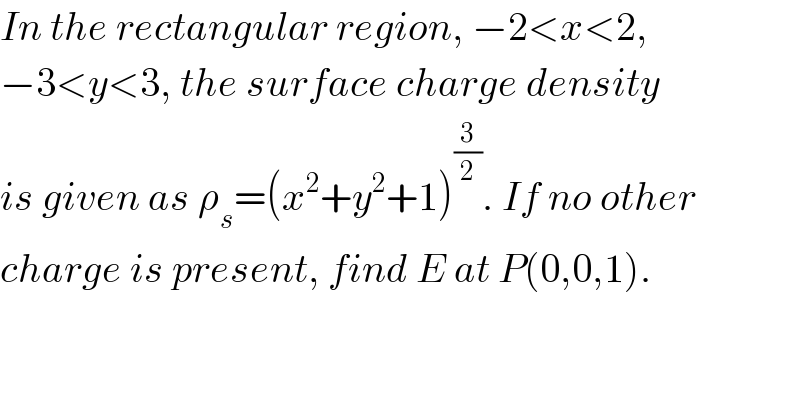
Question Number 82647 by Learner-123 last updated on 23/Feb/20

$${In}\:{the}\:{rectangular}\:{region},\:−\mathrm{2}<{x}<\mathrm{2}, \\ $$ $$−\mathrm{3}<{y}<\mathrm{3},\:{the}\:{surface}\:{charge}\:{density} \\ $$ $${is}\:{given}\:{as}\:\rho_{{s}} =\left({x}^{\mathrm{2}} +{y}^{\mathrm{2}} +\mathrm{1}\right)^{\frac{\mathrm{3}}{\mathrm{2}}} .\:{If}\:{no}\:{other} \\ $$ $${charge}\:{is}\:{present},\:{find}\:{E}\:{at}\:{P}\left(\mathrm{0},\mathrm{0},\mathrm{1}\right). \\ $$
Commented byLearner-123 last updated on 23/Feb/20

$${Can}\:{this}\:{Q}.\:{be}\:{done}\:{with}\:{the}\:{help}\:{of}\: \\ $$ $${symmetry}? \\ $$
Commented byLearner-123 last updated on 26/Feb/20

$$?? \\ $$
